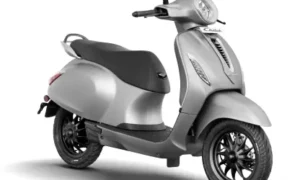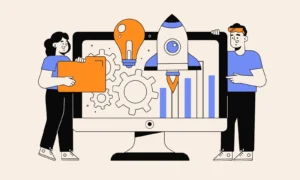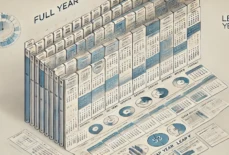The widespread use of meal delivery applications has fundamentally transformed the dining habits of individuals. By simply using their cellphones, consumers can effortlessly peruse a wide array of restaurant choices, make orders, and have delectable meals delivered directly to their residence. Yet, beneath the smooth user interface lies an intricate process of application development, encompassing multiple aspects that influence the overall expense. This article explores five practical lessons on the cost of developing food delivery apps, providing insights into the important factors that businesses should consider.
Lesson 1: Comprehensive Planning is Essential
The first lesson in understanding the cost of food delivery app development is the importance of comprehensive planning. From conceptualization to launch, every stage of app development requires careful planning to ensure smooth execution and cost-effectiveness. Before embarking on the development journey, businesses should conduct thorough market research to identify their target audience, understand competitors, and analyze trends in the food delivery industry.
Additionally, defining the app’s features and functionalities is crucial during the planning phase. Will the app offer real-time tracking of orders? What payment methods will be supported? Will there be a rating and review system for restaurants? By clearly outlining these requirements upfront, businesses can avoid scope creep and unnecessary expenses during development.
Lesson 2: User Experience (UX) Design Plays a Vital Role
The second lesson revolves around the significance of user experience (UX) design in food delivery app development. A well-designed app not only enhances user satisfaction but also influences customer retention and engagement. Investing in UX design may incur additional costs, but it is a worthwhile investment that can differentiate the app from competitors and drive long-term success.
During the design phase, attention should be paid to intuitive navigation, visually appealing interfaces, and seamless interactions. Conducting usability testing with potential users can provide valuable insights into areas for improvement, ultimately leading to a more refined and user-friendly app.
Lesson 3: Backend Development Complexity Impacts Costs
Behind the scenes of a food delivery app lies a sophisticated backend infrastructure that handles various functions, including order management, payment processing, and database management. The complexity of backend development significantly impacts the overall cost of app development.
For instance, integrating third-party APIs for features like geolocation, payment gateways, and push notifications may require additional development efforts and incur licensing fees. Moreover, scalability considerations should be taken into account to ensure that the app can handle increasing user demand as it grows.
Lesson 4: Choosing the Right Technology Stack is Crucial
The choice of technology stack is another crucial factor that influences food delivery app development cost. From frontend frameworks to backend programming languages, each technology decision has cost implications and can impact the app’s performance, scalability, and maintenance requirements.
For frontend development, businesses can choose from popular frameworks like React Native, Flutter, or native development for iOS and Android platforms. Similarly, for backend development, options range from traditional server-side languages like Python and Ruby on Rails to modern technologies like Node.js and GraphQL. Assessing the pros and cons of each technology stack in terms of development time, scalability, and ecosystem support is essential for making informed decisions and optimizing costs.
Lesson 5: Continuous Maintenance and Support are Ongoing Expenses
The final lesson pertains to the ongoing expenses associated with maintenance and support after the app is launched. While the initial development phase may incur the bulk of the costs, maintaining and updating the app to meet evolving user needs and technological advancements is an ongoing investment.
Routine maintenance tasks, such as bug fixes, performance optimization, and security updates, are essential for ensuring the app’s reliability and security. Additionally, incorporating user feedback and iterating on features based on analytics data are critical for staying competitive in the dynamic food delivery market.
Conclusion
In conclusion,The food delivery app development cost requires careful consideration of various factors, from planning and design to technology choices and ongoing maintenance. By learning from real-life lessons and incorporating best practices, businesses can navigate the complexities of app development more effectively and optimize costs while delivering exceptional user experiences. Ultimately, investing in a well-designed and robust food delivery app can yield significant returns by attracting and retaining loyal customers in an increasingly digital-centric world.























































